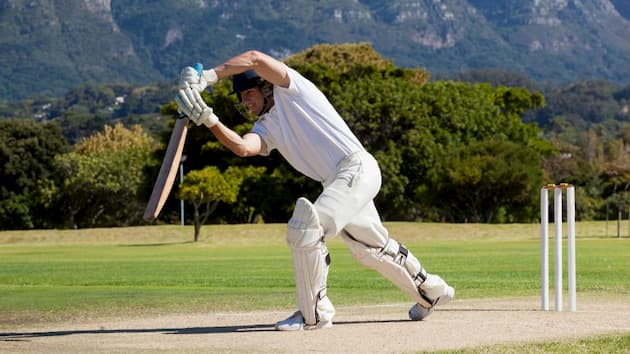Whether you’re an aspiring cricket player, or want to buy some cricket equipment for your kid to practice in the yard, choosing the right pieces that match the skill level and physical ability of the person is essential to making the right buying choices. Every piece of cricket equipment comes in a wide range of shapes, sizes and can be made from a variety of materials, so knowing what to look for will help you narrow down your choices and make the buying process much easier. I’ll start off by helping you choose the right cricket bat, then move on to gloves, batting pads and helmet.
Choosing the Right Cricket Bat

There are a few different factors that play a crucial role in selecting a bat. For starters, the willow source is of paramount importance, as only the highest grades of willow can be used to manufacture high-quality cricket bats.
Cricket bat willow is usually sourced from Kashmir and the UK. Willows grow to a maximum height of about 20-30 metres, and their diameter is 1-1.5 metres. The trees that are grown for manufacturing cricket bats are felled after they reach a circumference of roughly 140cm. The consistency of the grain and the density of the wood are both crucial to the end balance and the performance of the bat.
Additionally, you want to make sure you pick the right bat size. The bat shouldn’t be too heavy nor too long to prevent proper technique and fluent stroke play. Bats meant for kids are proportionately scaled down in size and weight to meet these important requirements. Heavier bats will be slower to use and you’ll have to use more effort to swing it. Lastly, you want to pay attention to the grains aspect of the bat. The number of grains can impact performance greatly. A bat with narrow grains will improve your performance as a batsman.
Choosing the Right Cricket Gloves

There are two types of cricket gloves – batting and wicket protector gloves. Both types have the same purpose – to protect your fingers from injury, but they are different from one another. When you’re evaluating batting gloves, look at the fingers to check that each finger carries flexible padded areas. Further, make sure the thumb of the bottom hand comes with extra protection. The most important measurement to pay attention to is the length from the beginning of your wrist to the longest finger tip in a straight line.
For those protecting the cricket wickets, equipment such as finger protection is even more important. Broken fingers are the most serious risk as a wicket keeper, so the gloves should come with a lot of padding.
Choosing the Right Cricket Pads

Just like there are two types of cricket gloves, there are two types of cricket pads – batting and wicket pads. The pads are an important piece of equipment, especially when you’re just starting out. You may want to borrow them from your club or teammates, but at some point, you’ll have to buy them. You have to make sure the pads you get fit your legs properly and are comfortable to wear. If you get a decent pair of pads that suit your stance and style, you’ll be much more comfortable while batting. Batting pads are available in a wide range of sizes to suit different players.
For wicket keepers, the pads are even more important. Wicket keepers are the most active individuals on the field, as they need to pay attention to every ball, stop byes, effect stump-outs, take crucial catches and encourage their team. The wicket keeper’s pads need to fit his legs and provide smooth movement behind the stumps that form the cricket wickets. The will protect your legs from painful blows. Quality pads are designed to provide the necessary protection for any level of play. Check for the sturdiness of the ankle and calf straps.
Choosing the Right Cricket Helmet

Batsmen are required to wear a sturdy, solid helmet to protect themselves from injury by the cricket ball, which can be thrown at high speeds. A good fitting is of paramount importance, and the peak should protrude horizontally from the line of the batsman’s eyebrows. Besides being steady and solid, the helmet should be lightweight and allow for airflow.
The helmet should be made of sweat absorption material, and it should dissipate shock to minimise the risk of head injury. It should feel comfortable but firm, and there shouldn’t be any unwanted or excessive movement in any direction. The chin strap should be always fastened for extra security.
In order to measure yourself for a cricket helmet, you should run a tape measure above your eyebrows, around the mid section of your forehead and around the side (just above the ears to the bump on the back of the head). In due time, the internal padding will mould to your head’s shape.


